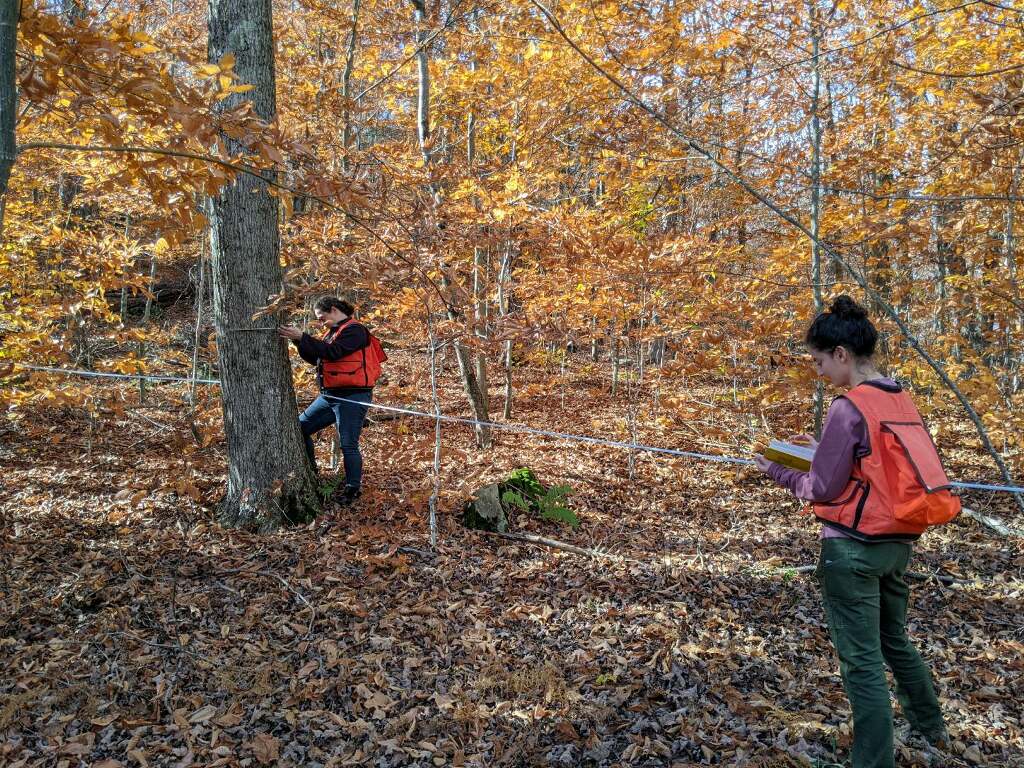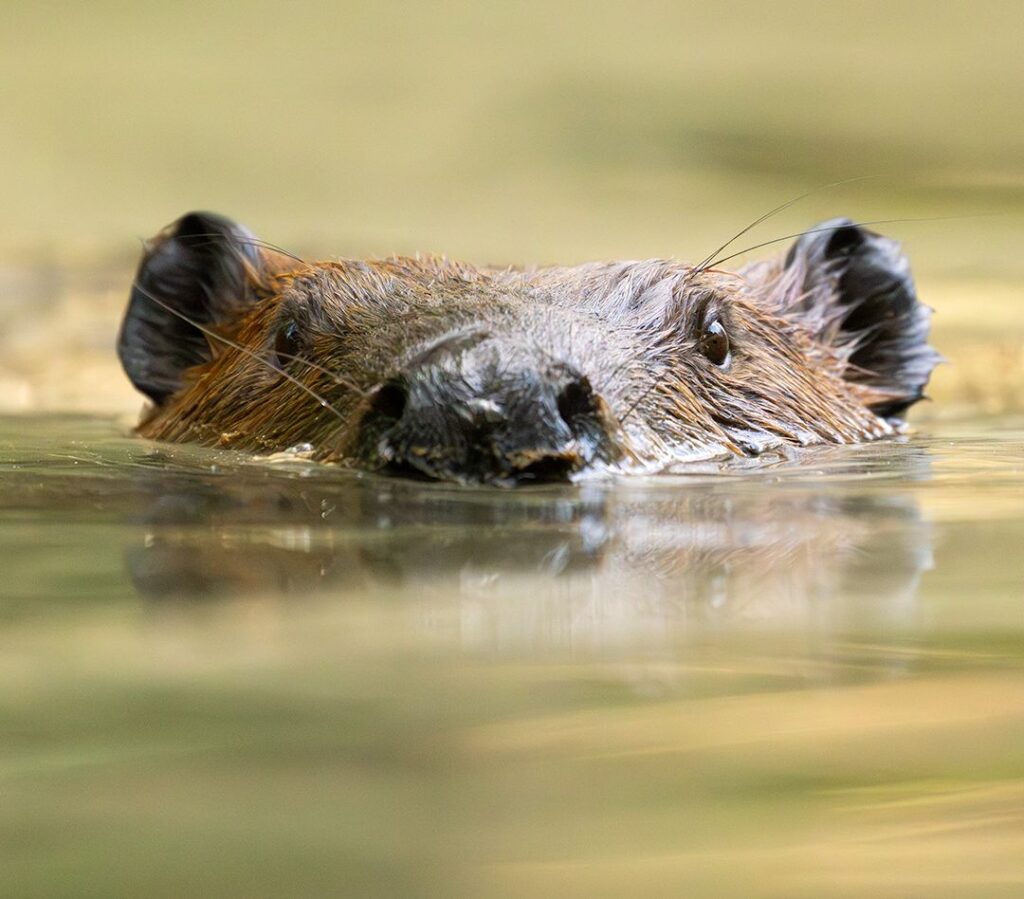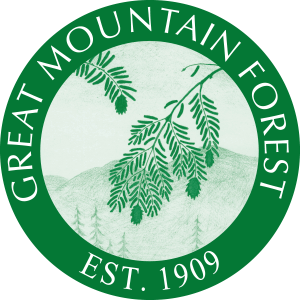
PREVIOUS WEATHER REPORTS
Forest Giants
No truer friend of the Forest ever wandered these woods than David Leff, a former trustee of the organization who had helped create the conservation easement that established GMF under the Forest Legacy Program. David left behind a manuscript about his explorations of the forest, the first three chapters of which were recently published in Appalachia Journal. Through the generosity of David’s estate, excerpts of other chapters will appear in GMF newsletters, linked to the full pieces on the website. The second of these appears below, an outing taken by David and GMF Forester Emeritus Jody Bronson to a spot near Bigelow Pond.
Forest Giants
By David Leff
Wearing heavy boots and wool vests, surrounded by forestry and mechanic’s tools, Jody Bronson and I sat around the woodstove in the barn-like forestry shop on a chilly April day discussing the lonely, hard life of colliers. “Sometimes they covered their makeshift shanties or lean-tos with hemlock bark,” he said. I must have registered surprise. “The bark is fairly flexible and can be peeled in large pieces. Besides, the trees made lousy charcoal because of their low density.”
“But hemlock was cut extensively.”
“Because the bark is loaded with tannins and perfect for tanning leather, a big nineteenth century industry in the area.”
Today, hemlocks cover over 40% of the forest, and are some of the oldest and largest trees. They often grow in pure stands, creating an almost constant twilight beneath a thick canopy of dark green limbs, suppressing other tree species, keeping streams cool for brook trout and a variety of aquatic creatures, the ground moist for moss, lichens, and salamanders.
“Let’s take a walk,” Jody said. Soon we were among giants that were saplings when the Pilgrims landed at Plymouth Rock.
We went by the sugarhouse, planing shed, and sawmill, and via a series of faded woods roads, trails, and bushwhacking, found ourselves skirting the shore of Bigelow Pond in the eastern part of the forest adjacent to Nature Conservancy property. Passing a ginormous boulder perched atop another boulder, we climbed an eastern facing slope, and found ourselves among huge hemlocks mixed with pine. Many stood several stories tall before branching. It felt as if we were walking among the columns of an ancient palace. The ground tilted toward the water, which seemed to glow with a powerful incandescence when seen from the permanent gloaming beneath the trees.
“Some of these are probably as much as 120 feet tall and over a yard in diameter,” Jody noted, reverence in his voice. “They grow slowly, and there may be 22 rings per inch on some of them.”
Awestruck, I was at a loss for words. All I could manage was a breathy, “Wow!” My neck quickly became sore from looking upward.
Black and yellow birch, beech, and black cherry grew in the understory, and though they were substantial trees in most any context, here they seemed like dwarfs of their species. Canada geese honked overhead, and as they descended we heard them splash in the water below.
I looked into the crowns; patches of blue sky barely visible. Some trees showed wear and tear from centuries of ice, wind, insects and disease. Super-focused, gazing along the trunks, it was hard to disengage, as if I were under enchantment. Dizzy, disoriented, I struggled to regain a horizontal view. The bark was brownish-gray and deeply furrowed. Touching it was like reaching for something sacred. It was as if we’d stumbled onto a lost world of dinosaurs that were both powerful and placid. A piliated woodpecker banging away for insects on some hollow tree not far distant echoed through the grove, sound bouncing off the huge trunks like a pinball. The spell was broken.
Tanneries turn animal skins into leather by permanently altering the protein structure of the hide, leaving it more durable, flexible, less liable to putrefy. Soaking hides in an astringent solution of plant tannins for weeks and sometimes months, was a critical part of the process. Hemlock bark was prized for its high, 10 to 12% tannin content, and gave leather a rich reddish-brown color.
Several small tanneries were operating in Norfolk by 1830, consuming at least 1,600 cords of hemlock bark annually, according to Winer. Their legacy is memorialized in the name Tannery Pond, just beyond the GMF boundary to the north of Old Meekertown Road. Nearby Winsted became a center for tanning, and its largest company used over 6,700 tons of hemlock bark in 1872 at their Winsted and West Norfolk operations, requiring cutting at least 300 acres of old growth. Since bark is bulky and hides more easily transported, tanneries tended to locate near the hemlocks.
Harvesters cut down trees, peeled off the bark, and cut it into four-foot strips. It’s said that a couple men could fell and peel enough trees to produce two or three cords of bark per day. Some logs were sawn into lumber, but generally left to rot since hemlock was inferior to white pine for construction. Bark was placed on the ground to dry, inner side up. Afterward, it was stacked in big piles to dry further. Transported to tanneries, it was shredded before entering a series of hot water baths where it stayed for days as tannins leached out, producing an acetic liquor in which hides were soaked. Bark was removed from the liquid, dried, and used as fuel.
Soaking hides in tanning liquor was part of a long process that included curing with salt, soaking in water to soften and remove flesh and fat, soaking in lime to dissolve hair and epidermis, and scraping at various stages. It was a malodorous process with a noxious waste stream that usually relegated tanneries to the edge of town.
“Winer cored several of these giants back in the mid-fifties,” Jody said, “so we know that some of them are almost four centuries old.”
“Why weren’t they cut by the tanneries?”
“It’s a mystery,” Jody replied, pausing a moment, pondering before answering. “Maybe the snow was too deep when loggers came through, or the first harvest was for coal wood and the grove was too small and isolated for tanbark crews. Hemlock bark is heavy and awkward and had to be hauled to a tannery, unlike charcoal which was produced in the woods and was lighter and more compact. Besides, the terrain is rough, and dropping the trees might have caused more breakage than it was worth. For reasons unclear, Winer also thinks that the owner at the time of nearby harvesting wanted to protect the stand. I don’t think we’ll ever know for sure.”
Tanbark harvesters left bare hillsides with stripped trunks lying like jackstraws. Slopes eroded and silted ponds and streams. Loss of the trees radically changed the cool, damp, sun-shaded environment on which many aquatic and terrestrial creatures depended, leaving soil dried by wind and sunlight. For whatever reason, this area around Bigelow Pond escaped that fate, and the ancient forest remains. Elsewhere in GMF, tanneries may have “reduced the abundance of larger hemlocks,” Winer wrote in the middle of the twentieth century, but “left advance reproduction that has since developed into seed sources for much of the present hemlock understory.” In the intervening 70 years, that understory has produced thick second-growth hemlock groves that echo the forests of old.
Rejected, by colliers, forgotten by tanbark harvesters, beloved by Ted Child who wrote his 1932 Yale forestry school master’s thesis on hemlock, the Bigelow Pond trees are entering their fifth century. But all is not well. Hemlock wooly adelgid, a tiny Asiatic, sap-sucking, aphid-like insect is literally draining the lifeblood out of hemlocks throughout their range, and has made inroads in the forest. Combined with another insect called elongated hemlock scale, it kills needles, shoots and branches, causing the trees to lose their vigor, thin out, turn grayish, and die. The devastation could be far greater than that caused by tanbark harvesters, leaving huge swaths of brittle, standing deadwood that disrupt the forest’s ecology and present extreme danger from fire and falling trees. A lone scientist from the Connecticut Agricultural Experiment Station is hopeful that adelgid hungry beetles may act as a biological control. But that’s another foray into the woods, on another day.
Norfolk Friday Night on the Green
Norfolk’s Fridays on the Green series continues with “Woodland Celebration” on June 21, beginning at 6:00 p.m. The evening is hosted by Great Mountain Forest, The Norfolk Conservation Commission and the Norfolk Foundation with music by Aimee Van Dyne.
How many trees on the Norfolk Town Green do you think you can identify?
We will provide a tree map and key with fun facts about notable trees!
Maps and GMF merchandise including delicious maple syrup
from our forest will also be available.
GMF is the first ever officially recognized
Bird-Friendly Maple Syrup Producer in Connecticut!
The Norfolk Conservation Commission’s
Native Plant Exchange will be offering native plants
to residents who removed an invasive plant!
The NCC will have printed copies of the NRI for sale – $30.
Lindera Plant Nursery is new and unique .
They sell seeds and seedlings that are beyond native,
they are specific to Litchfield County ecoregions.
Their goal is to help you restore native habitats.
06/21/2024
6:00 – 8:00 PM

Sip and Paint in the Forest
Location change due to potential storm!!!
We will now meet at the
GMF Forestry Office
201 Windrow Road, Norfolk
We will paint at Tamarack Pond and we will be able to move into the forestry office if the storm begins. I feel this is safer than being in the middle of the forest.
I apologize for any inconvenience.
Come join artist and teacher Kathy Good for a
Sip and paint workshop by the picturesque Old Man McMullen Pond in the heart of Great Mountain Forest.
Saturday, July 6
5 PM -7 PM
We will meet at the west gate just before 5:00 and drive in about 1 mile, at Potter’s Corner we’ll turn left to follow sign toward Norfolk for McMullen Pond.
$40


Meet the artist:
Kathy Good has been the recipient of several grants and awards from the Connecticut Commission on the Arts. She has been a visiting Artist and grant recipient at Weir Farm, Ridgefield Ct.
Her freshly, vigorous paint handling, provokes transcendental sensory after-images of ocean atmosphere and long low horizons, far different than the close and ethereal woodlands she formally portrayed. These current works indicate an intensity of emotional response to place and the particular poetic nature of its forms.
Text excerpted from the Art Studio of Bridget Eileen Grady.
Railroad Days

The North Canaan Events Committee will host Canaan Railroad Days. This year’s 60th Anniversary Railroad Days festival will include community dinners, a carnival, Firemen’s Parade, Train Hunt, vendor market, Family Fun Week, Roaming Railroad, and a drone show and fireworks.
Come visit our Great Mountain Forest table to get your copy of a forest trail map. We will also have delicious maple syrup and other GMF merchandise. We look forward to seeing you there.
Lawerence Field
East Main Street/ Rt 44 and 7, North Canaan, CT. Located across from McDonalds.
Saturday, July 13
10 AM- 3 PM
Bird Friendly Maple Sugarbush Walk

Saturday, May 18th, 10:00 AM
GMF Forestry Office
201 Windrow Rd, Norfolk
Join Matt Gallagher (Director of Programs and Operations, Great Mountain Forest) and Rosa Goldman (Forest Program Senior Associate, Audubon CT) to learn about the connections between maple syrup and bird conservation. Come prepared to take a walk in GMF’s sugarbush, the first Audubon-recognized bird friendly sugarbush in Connecticut. Participants will learn about Audubon’s Bird-Friendly Maple program, sugarbush habitat characteristics that support forest birds, and GMF’s management work to provide quality habitat in their sugarbush. Open to interested landowners, maple producers, and others.
$15
Game of Logging

Game of Logging is a program that provides hands-on chainsaw safety training and is recognized as the premier chainsaw safety course in the country. Instructors combine demonstration with participation for a successful and safe learning experience. We are offering level 1 and level 2 on June 6-7, 2024. There are five openings in this class. Cost $250
Great Mountain Forest Barn
200 Canaan Mountain Road
Falls Village, CT 06031
Winter Lecture Series


Leave it to Beavers
March 9th, 2024
The Norfolk Library and Virtual
9 Greenwoods Rd E, Norfolk, CT 06058
DEEP Master Wildlife Conservationist Ginny Apple will discuss Beaver’s as a keystone species, Beaver biology, behavior and history. Included in the talk will be the unique role of nature’s engineers in shaping North American landscapes as well as explain how Beaver ponds and wetlands can help us fight environmental problems from water pollution to erosion and climate change.
This event will have a virtual option to join the talk. An email will follow registration with the Zoom link.

GET IN TOUCH!
860 824-8188


